Agricultural Products Lists
-
Cultivation techniques of No-tillage and dry Direct seeding of Rice
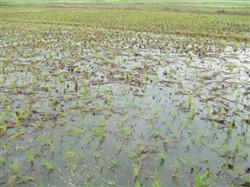
(1) Paddy fields that were previously used as rice without ploughing were selected for no-tillage, dry and direct seeding cultivation. Fields with many malignant weeds and heavy stickiness are not suitable for no-tillage cultivation. (2) 4-6 days before weed treatment and sowing, choose sunny or cloudy days with temperatures above 15 degrees and use 10% glyphosate 2 kg per mu.
2018-09-12 -
Occurrence and Control of withered Heart Disease in Rice
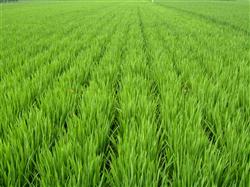
Key points of cultivation techniques for dry raising rice seedlings 1. Applying sufficient base fertilizer: combined with deep ploughing or irrigation level fields, 30-40 kg ammonium bicarbonate and 20-25 kg calcium per mu are applied as medium fertilizer at one time, and the former broad bean field should be used more. Vegetable or potato fields should be less. Second, insert thinly at the right time.
2018-09-12 -
Field Management of dry raising Rice seedlings and transplanting in the Field
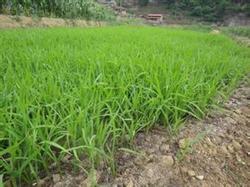
1. Fine field preparation, so that the field is flat and muddy, and an inch of water does not expose mud. 2. Fertilization principle: heavy application of base fertilizer and skillful application of spike and grain fertilizer. The amount of farm manure per mu is not less than 1500 kg. When raking the field, 70% of phosphorus, potash and nitrogen fertilizer are applied at one time, 20% of nitrogen fertilizer is used as tiller fertilizer, and 10% is used as panicle fertilizer (5 ml 10 days before heading). ...
2018-09-12 -
Operation and maintenance of rice seedling bed in greenhouse
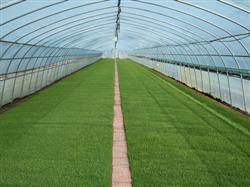
Rice seedling bed greenhouse is mainly composed of greenhouse framework, transparent cover (including plastic film, plastic plate, PC board, etc.), several single seedbeds and spraying system. The device has the characteristics of compact structure, high land utilization rate and convenient operation. 1. Before installation, the site must be leveled.
2018-09-11 -
How to prevent Diseases and insect pests in the stage of raising Rice seedlings
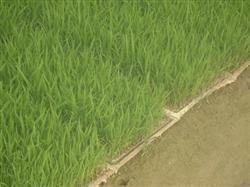
The phenomena of sitting, yellowing and lag are easy to occur in the stage of raising rice seedlings. The fields where sitting traps have occurred should be drained immediately to increase temperature and ventilation to reduce toxicity, and at the same time, quick-acting nitrogen, phosphorus and potassium fertilizers should be applied to supplement micro-fertilizers, with emphasis on zinc fertilizer, and those with symptoms of element deficiency should apply fertilizer deficiency in time, withdraw water and dry the fields or detour.
2018-09-11 -
Common problems and Countermeasures of Rice Seedling raising
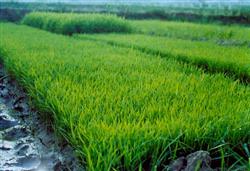
Cultivating strong seedlings is the key to high yield of rice. Through the analysis of the common problems in raising seedlings, the corresponding countermeasures were put forward in order to provide technical reference for cultivating high-yield and strong seedlings. (1) common problems and countermeasures of mechanical transplanting and raising seedlings 1. The emergence of seeds is poor. Machine transplanting seedlings often appear poor seed emergence, irregular emergence and seedling.
2018-09-11 -
One-time fertilization technique for Rice
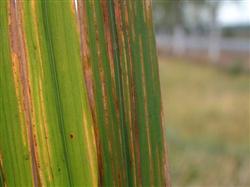
The distribution of rice bacterial leaf streak is referred to as rice fine leaf streak, which is one of the most important rice diseases in the world. The pathogen belongs to the genus Xanthomonas. Most of the pathogens invade from the stomata of leaves, and the disease can occur in any growth period of rice. The disease spot is a short and thin narrow spot, with stripes appearing between the veins of the leaves.
2018-09-11 -
Timely and early planting of rice is beneficial to increase yield.
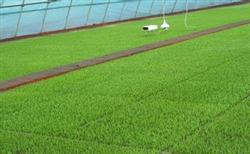
As a matching method of manually transplanting rice seedlings, wet rice seedling raising technology is suitable for different regions, rice planting seasons and different types of rice varieties, and is widely used in our country. The technology has the advantages of convenient operation, wide application and strong adaptability, and the seedlings cultivated with good technology have good quality and high yield. 1. The seedling board is accurate.
2018-09-11 -
Effect of different ratio of fertilization on yield of Rice
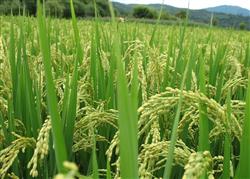
The premature senescence of rice from heading to maturity will lead to poor grain filling, increase of blighted grain and decrease of yield. There are many factors leading to premature senescence in the later stage of rice growth. First, improper cultivation and management. The planting density is too high, the plant growth is weak; the early and middle stages of nitrogen fertilizer application, phosphorus and potassium fertilizer and trace element fertilizer application.
2018-09-11 -
New cultivation techniques for High yield of Sorghum
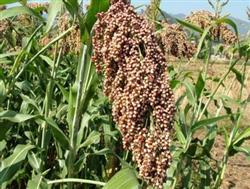
1. Timely sowing to protect the whole seedling sowing date is based on soil temperature and soil moisture. In early spring, seeds can be sown when the soil is 10 centimeters deep and the ground temperature is 12 ℃ and the water content is 15-20%. If necessary, you can first irrigate water to replenish moisture and then sow or sit in water to add moisture to sow to prevent bud drying and uneven emergence of seedlings. Liaoning is the main producing area of sorghum in Liaoning.
2018-09-11 -
High-yielding Cultivation Techniques of Sorghum
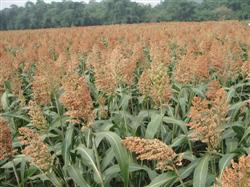
Sorghum is one of the main dry crops in Haicheng City, with drought resistance, waterlogging resistance, salt tolerance, adaptability and other characteristics, due to the change of people's dietary structure in recent years, sorghum rice again "favored", become one of the staple foods that people like, appropriate expansion of high-dye planting area, can achieve crop rotation, balance and benefit...
2018-09-11 -
Rice topdressing potassium fertilizer
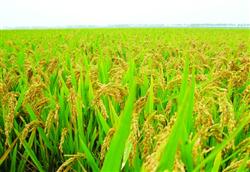
Potassium topdressing could significantly increase rice yield. Sufficient potassium is beneficial to enhance photosynthesis, promote sugar synthesis and accumulation, improve plant resistance, but also enhance the respiratory capacity of rice roots, promote nitrogen absorption and protein synthesis, so that rice grains are large and plump, high and stable yield.
2018-09-11 -
How to disinfect rice seeds
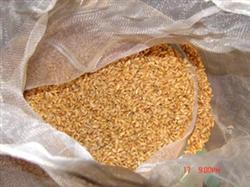
Rice seedling raising is about to begin, and seed disinfection is the key to raising rice seedlings. Ten methods of seed disinfection were introduced. First, soak rice seeds in 500 times solution of 50% carbendazim, 50% thiram methyl or 50% thiram for 48 hours (200 grams of solution mixed with water 100 kilograms can soak rice seeds 60-70 kilograms), then remove and accelerate germination and sow seeds.
2018-09-11 -
There are measures to increase rice production.
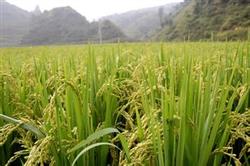
The application of "no-deep tillage" soil conditioner can increase the soil permeability, promote the growth and development of rice roots and improve the fertilizer utilization efficiency of rice, so as to increase the yield of rice. On this basis, paying close attention to the following measures will also play a great role in increasing rice production. 1. Increase the number of ears. Strong seedlings were cultivated by ①. For.
2018-09-11 -
Sorghum leaf spot disease
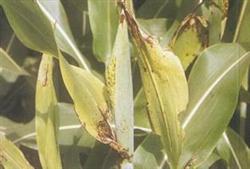
The symptoms are also known as spot disease. The disease can occur in all parts of the plant, mainly harmful leaves. The plaque is irregular in shape, long to fusiform or semicircular in size, up to more than 1cm, yellowish brown to grayish brown, with reddish purple edges. The disease spot often begins at the edge or end of the leaf, and some occur on the leaf surface or the upper part of the ear.
2018-09-11 -
Chemical control of sorghum rust
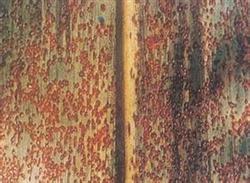
Symptoms Sorghum rust begins to develop around heading. Red or purple to light brown spots were formed on the leaves, and then the spots expanded with the expansion of the pathogen, and oval raised urediospores were formed on the surface of the leaves. After cracking, brown powder, namely urediospores, was exposed. In the late stage, winter spores form in situ...
2018-09-11 -
Sorghum bacterial red streak
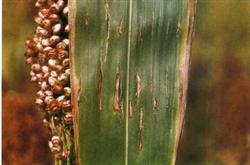
The main symptoms are damage to leaves. At first, the leaf spot showed a small, narrow, watery spot, and after expansion, it became light reddish brown. Some plaques turn brown in the center and red on the edges, and wide long oval spots appear intermittently on the stripes. Sometimes the disease spot can cover most of the leaf area. When the humidity is high, the pus of the small granular bacterial vaccine can be seen to overflow and dry.
2018-09-11 -
Sorghum sheath blight
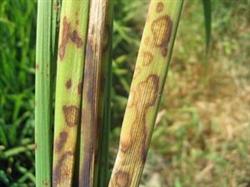
Symptoms of this disease are common in northern China and Taiwan, hybrid sorghum is more serious, and it also occurs in central China and southwest China. It mainly damages leaf sheaths and leaves. After the disease, water-soaked lesions were produced on the stems near the ground, and purple-red and gray-white spots were produced on the posterior leaf sheaths. In late growth or rainy and humid weather...
2018-09-11 -
Sorghum anthracnose
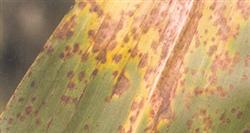
Symptom the disease is an important disease of sorghum, which occurs in all producing areas of sorghum. The disease can be infected from seedling stage to adult stage. Infection at seedling stage is harmful to leaves, resulting in withered leaves and death of sorghum seedlings. The disease spot of the leaf is fusiform, the middle is reddish brown, the edge is purplish red, and there are dense small black spots on the disease spot, that is, the pathogen conidium disk. Anthrax.
2018-09-11 -
Occurrence and control of head smut in sorghum
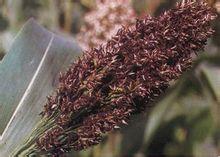
Due to the continuous expansion of sorghum planting area and the extension of planting years, the harm of head smut of sorghum is becoming more and more serious, which directly affects the production and development of sorghum. First, the damage degree of sorghum head smut only occurred sporadically in the local area of the county in the early 1990 s, and the area of sorghum head smut in individual villages and towns was about 43 m in 2000.
2018-09-11
